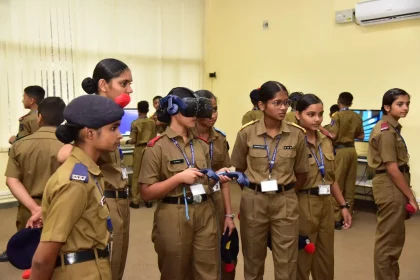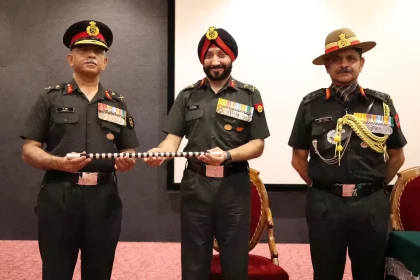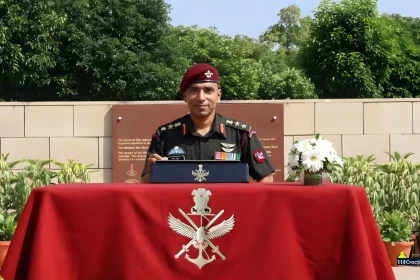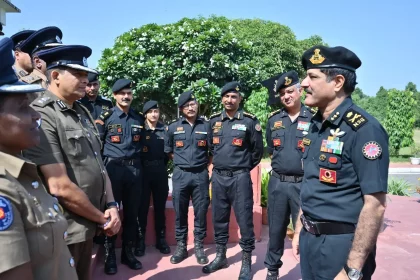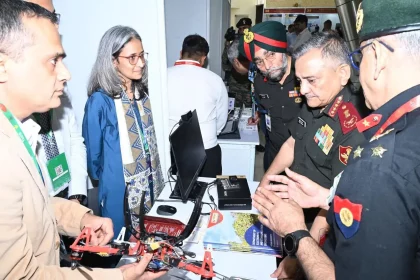Sainik School Bijapur Cadets Visit MCEME Secunderabad on Motivational Tour
MCEME Showcases Innovation, Discipline, and Career Paths in Defence.
College of Defence Management Launches ‘Vartalaap’ – AI-Powered Offline Language Learning Model
Indigenous AI tool to revolutionise defence learning with secure offline access to academic resources.
Maj Gen K Mahesh Takes Over as Colonel of the 3rd Gorkha Rifles
Regimental Ceremony at Varanasi Marks Leadership Transition in the 3rd Gorkha Rifles.
Colonel Punit Aswal Leads 7 PARA (SF) in Diamond Jubilee Tribute at National War Memorial
The battalion’s motto, “Never Out of the Fight,” embodies the relentless spirit of its soldiers who operate in the toughest…
NSG Commences First-Ever Crisis Management Course for Sri Lankan Police Officers
NSG Launches First-Ever Crisis Management Course for Sri Lankan Police Officers to Boost Regional Counter-Terrorism Preparedness.
CDS Inaugurates Tri Services Academia Technology Symposium (T-SATS) in New Delhi
CDS General Anil Chauhan launches India’s first Tri Services Academia Technology Symposium at Manekshaw Centre.

